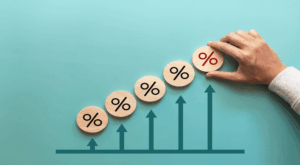
Risk management is the fundamental pillar of CFD trading. A successful trade requires a well-devised and flexible risk management framework for experienced traders. While loss mitigation is certainly a goal of any sophisticated risk management, protection would also include capital preservation, optimization of position sizes, and guarantees of long-term profitability under changing market conditions.
Dynamic risk management starts from granular risk identification and assessment. Well-seasoned traders understand that risks have varied manifestations and, for this example, include market volatility and leverage, liquidity issues, and news events that develop suddenly. Every trade comes with its own pitfalls, and understanding these variables is important to constructing an adaptable framework fit for market dynamics. Leverage doubles the excitement for CFD traders; however, it magnifies losses as well. Effectively managing this aspect of leverage is the bedrock of sound risk strategy.
Position sizing is an important risk management technique. Well-experienced CFD traders usually adopt a percentage of trading capital to measure their risks rather than risking fixed amounts per trade. This means that no single loss can significantly affect the portfolio. Under dynamic conditions, changing the position sizes reframed towards the current market conditions would then work, for example, at periods of extreme volatility where a trader would sacrifice diminished position sizes to reduce risk exposure. According to this consideration of more stable markets on the contrary, larger positions could only be slightly taken while under overall risk restrictions.
Placing a stop-loss order is another means of dynamic risk management. For example, no excessively tight or loose orders are placed in such a way that they save the trader from a sudden exit only because of minor oscillations or else it may result to large losses. Trailing stops which move up with the market price are especially useful in CFD trading, locking profits in while still allowing positions to benefit from favorable price swings. It is the well-placed stop-loss that makes the difference between an “exit much controlled” and “it becomes catastrophic loss”.
In addition, a diversification strategy integrated by veteran CFD traders to their frameworks is portfolios configured across different asset classes. In fact, due to its overlapping exposures, doing so can avoid the risk of gross overweight to any one asset, such as forex, commodities, indices, or stocks. But besides that, it has further advantages for his portfolio. Several asset classes may react differently to the economic or political events. More often, a falling stock market coincides with rising values in safe-haven investments, such as gold, while these hedge against the considerable losses of equity-based trades.
Dynamic risk management is characterized by on-going monitoring and adjustments to one market condition. They are looking closely at the performance of their portfolio-from adjusting strategies more often. This could mean reallocating capital from failing sectors or changing stop-loss levels, according to new information or, when excruciatingly uncertain, out of the market entirely. What makes that possible is flexibility since no strategy can remain effective forever in a constantly changing environment.
Ultimately, a dynamic risk management framework is about balance. It allows the sophisticated trader to take opportunities presented by CFD but at the same time guards their capital against uncertainties as they crop up in the markets. With adaptive position sizing, strategic stop-loss orders, diversification, and even disciplined trading psychology, CFDs prepare traders to weather the many storms that are present with full-fledged market activity.




